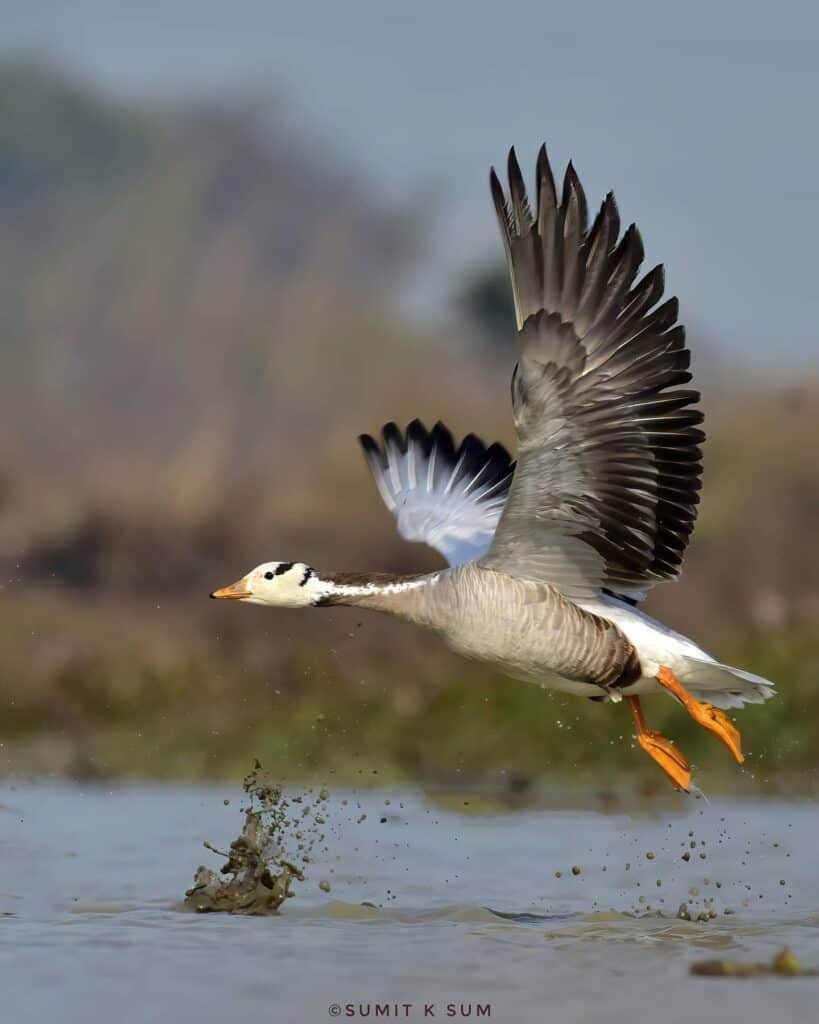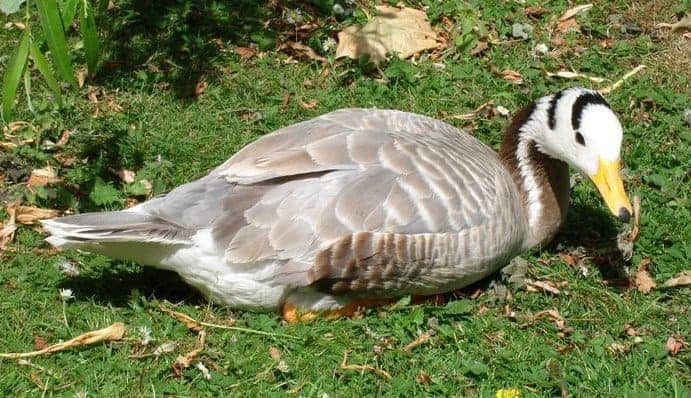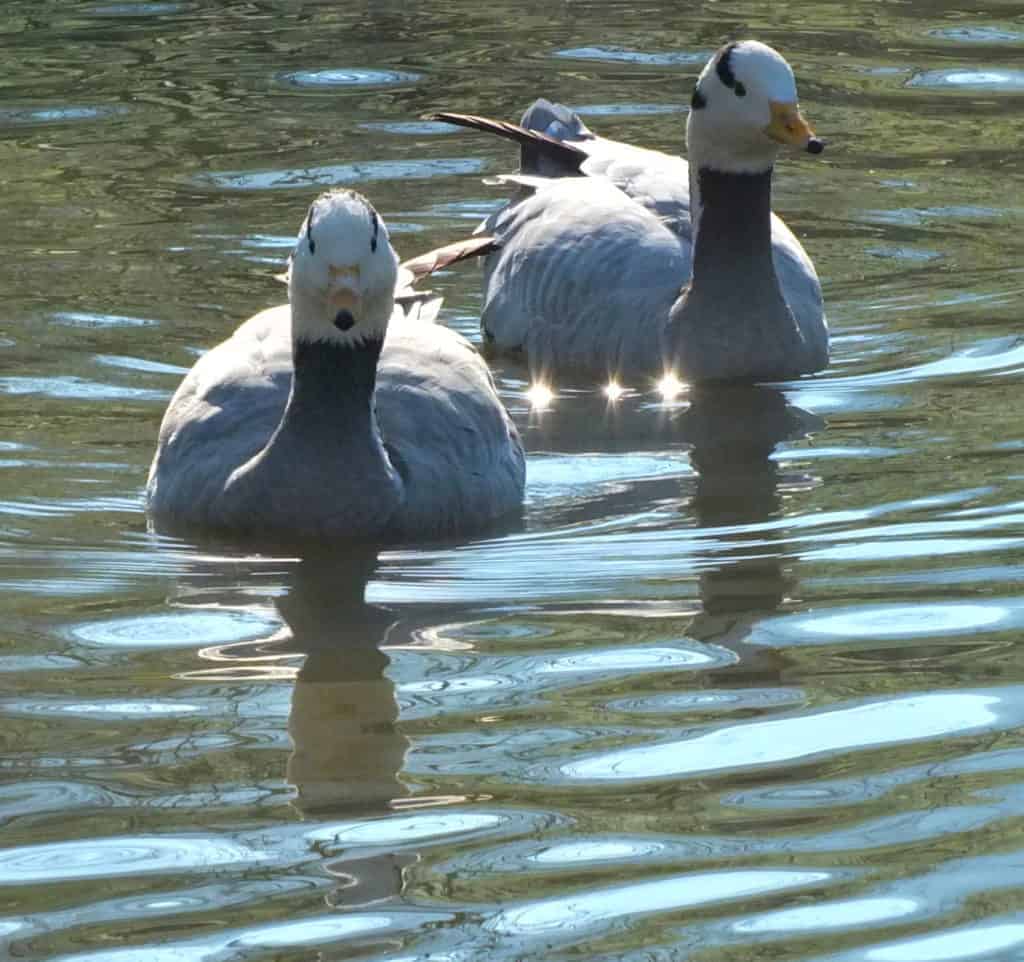Bar-headed Goose


Anser indicus
The Bar-headed Goose is one of the most striking of the geese. The name of this very gracefully-built bird derives from the two prominent horseshoe shaped, brownish-black bars enhancing the white head.
The general colour is pale grey. A large wing area for its weight compared with other geese, and other physiological adaptations, enable it to migrate at exceptionally high altitudes over the Himalayas. The breeding area is largely Central Asia and migration for the winter is to India, Assam and northern Burma. One of the Indian names for this goose is Rajhans, in Nepal it is Nang-pa.
The favoured summer habitats are the lakes at high altitudes where the short surrounding grass is appreciated. Most winter grazing areas are currently under cultivation and this goose has become reliant on wheat, barley and rice crops, resulting in considerable damage to the shoots of these crops.


Wild birds tend to breed in colonies consisting of thousands of birds. Avian predators, such as ravens, crows, kites and sea eagles, as well as foxes take their toll, but the overall population is possibly increasing. There are introduced populations in the Netherlands and other parts of Europe.
This beautiful goose is well represented in collections. The elegant shape, pretty colour and the long slim neck are particularly appealing. It is perfectly hardy and breeds readily. Being highly sociable, it does not molest other birds, apart from being naturally protective in the breeding season. Bar-headed Geese prefer natural cover or a kennel or wigwam nest box, and they will use nest sites on islands. They may even tolerate a second pair on the same island if nest boxes are back-to-back.

Mature at two years old, Bar-headed Geese normally lay in April to May. Laying may be delayed after a long cold winter. 4–6 eggs are incubated for 27 to 30 days. Sometimes they may lay a second clutch. Goslings are not hard to raise by hand, or they can be parent-reared.
FURTHER READING
Harteman, J. Harteman Wildfowl Aviaries Bar-Headed Goose.
Ottenburghs, J., van Hooft, P., van Wieren, S.E. et al. 2006. Frontiers in Zoology. Hybridization in geese: a review.
Scott, G. R., Hawkes, L. A., Frappell, P. B., Butler, P. J., Bishop, C. M., & Milsom, W. K. (2015). How Bar-headed Geese fly over the Himalayas. Physiology (Bethesda, Md.), 30(2), 107–115. https://doi.org/10.1152/physiol.00050.2014